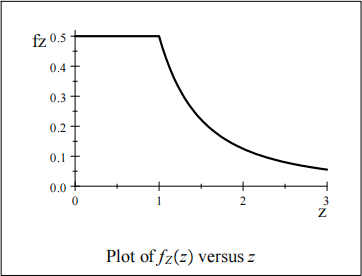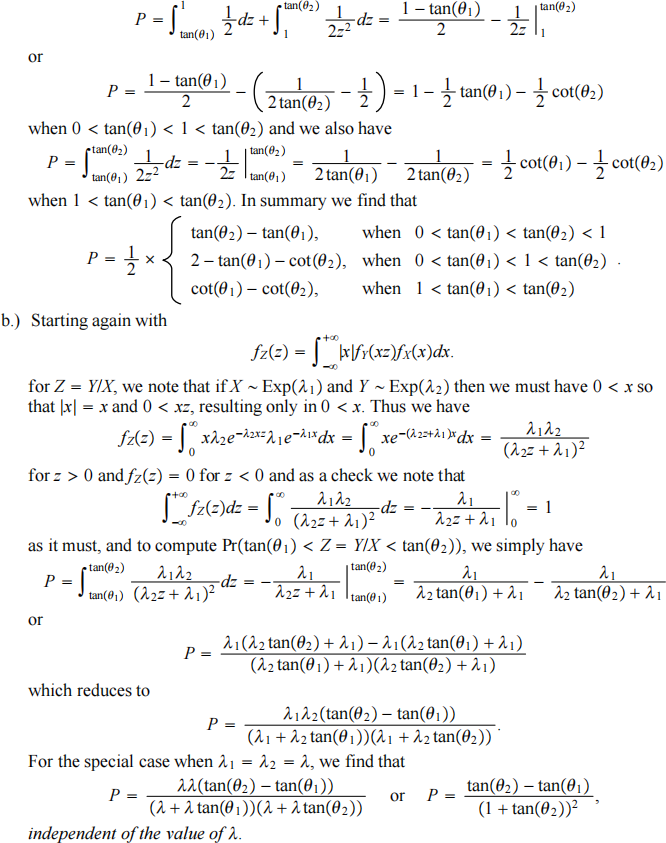ESE 5030 - Simulation Modeling & Analysis Spring Semester, 2023
Hello, dear friend, you can consult us at any time if you have any questions, add WeChat: daixieit
ESE 5030 - Simulation Modeling & Analysis (Take-Home Midterm)
Spring Semester, 2023
Instructions:
1.) This problem is due by 11:59 PM (EDT) on Friday, March 24th, 2023.
2.) It is an exam problem and must be treated as such, so you are not allowed to consult with anyone regarding this problem.
3.) You may consult your notes, the textbook and any information provided on the Canvas site for the course.
4.) All questions about the problem should only be sent to me via email.
5.) You must upload your theoretical calculation as a pdf file and your simulation should be an Excel file or any other program of your choosing.
Take-Home Problem (16 points)
Suppose that the points(X,0)and(0, Y)are connected by a straight line so that it makes an angle θ with the negative x axis, as shown in the following figure.

For given angles θ1 and θ 2 with 0 ≤ θ1 < θ 2 ≤ π/2.
a.) (6 points) Compute (in terms of θ1 and θ 2 ) the probability that the angle shown in the figure is between θ1 and θ 2 , if X ~ U[0,1)and Y ~ U[0,1). Be sure that your result considers all three possibilities.
b.) (5 points) Compute (in terms of θ1 , θ 2 , λ 1 and λ 2 ) the probability that the angle shown in the figure is between θ1 and θ 2 , if X ~ Exp(λ1)and Y ~ Exp(λ2). What do you notice
about your result when λ1 = λ 2 = λ?
c.) (5 points) Construct a Monte-Carlo Simulation that could be used to verify your results in parts (a) and (b). Be sure that your simulation considers all three possibilities for part (a) and be sure that your simulation is able to verify the special result in part (b) when λ 1 = λ 2 = λ .
Solution to the Take-Home Problem
a.) Here we have X and Y as the random variables X ~ U[0,1)and Y ~ U[0,1)and Y = Xtan(θ) and we like to compute
P = Pr(θ1 < θ < θ 2)= Pr(tan(θ1)< tan(θ) < tan(θ2))
or
P = Pr(tan(θ1)< Y/X < tan(θ2)).
Now, setting Z = Y/X = H(X, Y), we have Y = XZ = G(X, Z)and using the general result

For here, X ~ U[0,1)and Y ~ U[0,1), we must have 0 < x < 1 and so |x | = x and 0 < xz < 1,resulting in 0 < x < 1/z since z > 0. Thus we have

or

As a check, we shown the plot offZ(z)versus z

and we note that fZ(z)≥ 0 for all z and

as it must. To compute Pr(tan(θ1)< Z = Y/X < tan(θ2)), we have

when 0 < tan(θ1)< tan(θ2)< 1. We also have

c.) A Monte-Carlo Simulation of these is provided in the midterm_th.xlsx spreadsheet and it shows very good agreement with the theory in both parts (a) and (b).
2024-03-25